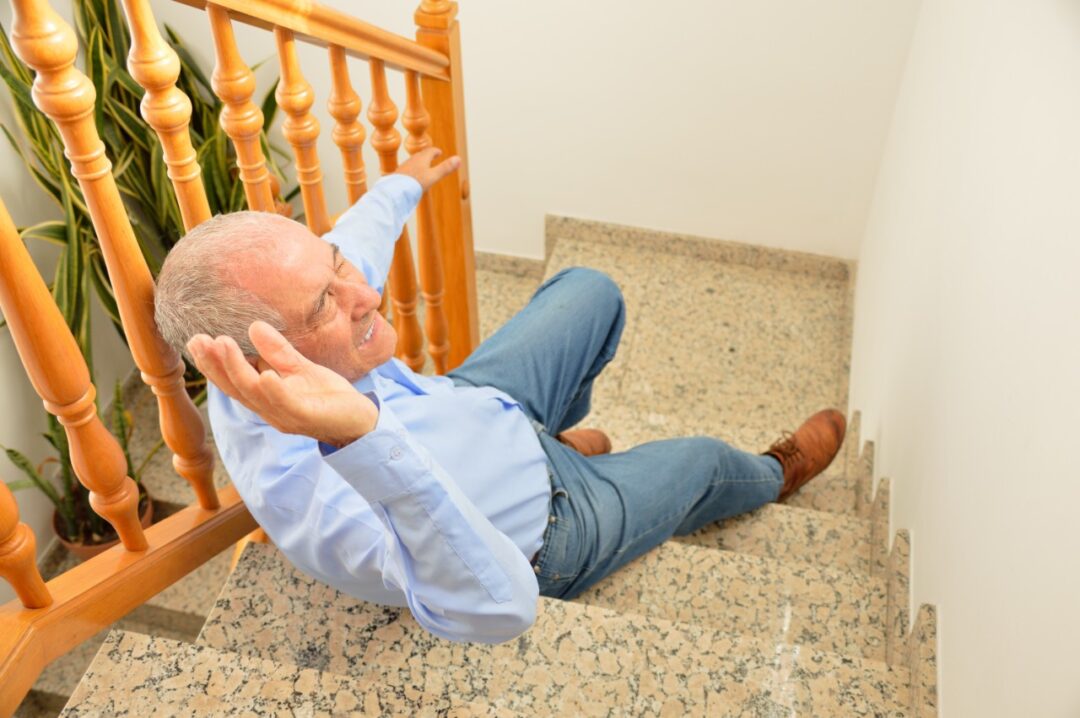Why am I more at risk of falling as I get older? |

I am the rehab physician for a charming, ninety-year-old woman who is recovering from a broken hip. She is very sharp and independent, and had been living alone until her recent fall at home. She was hurrying to turn off her stove burner when she lost her balance and fell on the linoleum kitchen floor.
Weeks later she is almost pain-free from her hip replacement surgery, but as I watched her stand up from her chair to grab onto her walker, I felt very uneasy. She was still fairly weak and struggling to get up safely. I knew she was still a high fall risk, and we both worried about her falling again. My protective side wanted to keep her in rehab, but then again I knew that we couldn’t exactly “hold her hostage” because of something that might happen in the future.
There’s no way to prevent people from falling down 100% of the time. However, there are some interventions that have a proven track record for reducing fall risk. The CDC has a nice compendium of research describing what works. I thought I’d summarize it for you here:
- Exercise – Many studies demonstrate that regular strength, balance, flexibility, and endurance training can reduce fall risks by 50-60%. Classes are often led by physical therapists and last about 60 minutes, 3 times per week to be effective. Tai Chi has also been proven effective for fall reduction. One Swiss study recommended piano music with varied rhythms to challenge stepping speed and balance, and another Japanese study used “Twister-like” colored blocks to improve stepping agility.
- Winter Grips – One study showed that Yaktrax (a traction device that fits over the bottom of shoes, the way chains fit over car tires) reduced falls in snowy Wisconsin by about 60%!
- Home Evaluations – When occupational therapists visit a person’s home, they look for specific fall hazards (such as area rugs, cluttered hallways and bathrooms, stairs without railings) and recommend equipment (such as grab bars, walkers, and shower chairs) that can help to make people more steady during everyday activities. Just one visit (lasting an hour or an hour and a half) may reduce falls by 30-40%.
- Stopping Medications – One study showed that stopping sedative medications (such as benzodiazepines for anxiety) reduced fall risks by 67%! It’s very important to limit the medications that we take whenever possible. Another study suggested that formally reviewing one’s current medication list with a primary care physician could also significantly reduce falls.
- New eye glasses – A vision check by an optometrist, along with new glasses prescription, can improve poor vision and reduce this risk for falls.
- Cataract surgery – Our eye lenses get cloudy as we age, and putting in fresh, clear lenses (a.k.a. cataract surgery) may reduce fall risk by 34%.
- Vitamin D Supplementation- Since low Vitamin D levels can result in weak muscles and thinning bones, the American Geriatrics Society recommends Vitamin D supplementation of 4,000 IUs per day for adults over 65 with low Vitamin D levels.
- Pacemakers – For those with slow heart rates or heart blocks, pacemakers can reduce dizziness from rhythm problems. If the heart is not beating normally, a pacemaker may prevent fainting and falling.
- Foot Checks – One podiatrist visit (with a prescription for well-fitting shoes or sole inserts if needed) can reduce fall risks significantly.
Overall, regular exercise and limited medications are the two most important fall risk reduction strategies that we have. Enlisting the help of physical and occupational therapists, optometrists, ophthalmologists, primary care physicians, cardiologists, rehab physicians and podiatrists can further success!
References
https://www.cdc.gov
https://www.americangeriatrics.org
https://www.medscape.com/viewarticle/819047
If you have any more questions just Ask Hanna, our health advisors are here to help.
Image: ©Shutterstock / cunaplus








